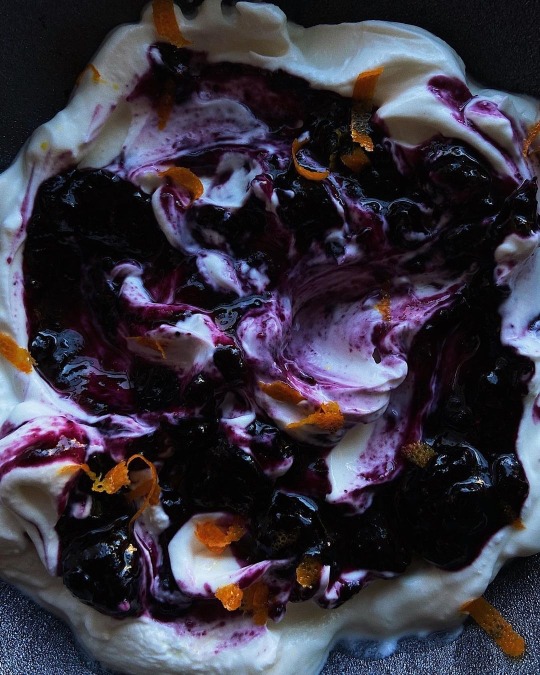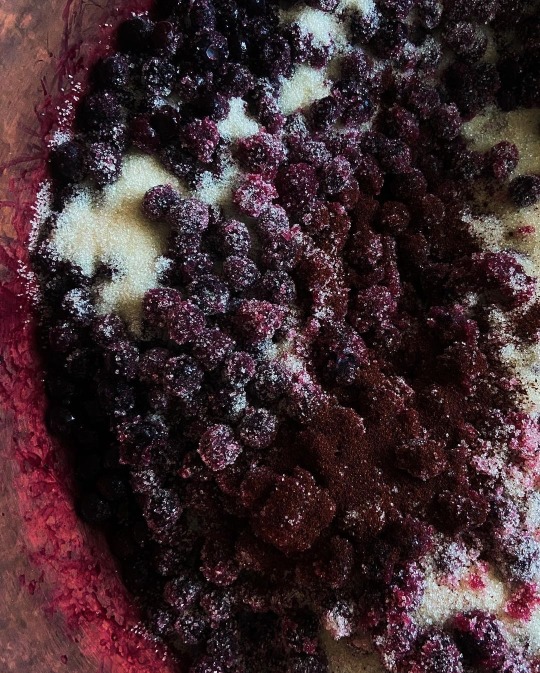#wild sumac
Text

Mab’s drawlloween club day 3: werecat
“Mountain Lions Are Murder Gardeners”
Description: Mountain lion skull garlanded with staghorn sumac and wild blackberry (favourite foods of their prey, white tailed deer).
Inspired by a study on how the North American mountain lion strategically composts the remains of its meals to encourage healthy plant growth which attracts deer, their main prey in Ontario. The study found the soil in the composting areas of mountain lions had 30% more nitrogen than the surrounding forest.
#bane folk#mabsdrawlloweenclub#inktober#mountain lion#cougar skull#puma concolor#staghorn sumac#rhus typhina#wild blackberries#botanical illustration#pen and ink
25 notes
·
View notes
Text

Purslane Pockets / Lebanese Bakleh (Vegan)
#vegan#appetizer#lunch#pastry#lebanese cuisine#middle eastern cuisine#ramadan#bakleh#puff pastry#purslane#wild greens#sesame seeds#onion#pomegranate molasses#paprika#sumac#olive oil#sea salt#west asian cuisine
33 notes
·
View notes
Photo
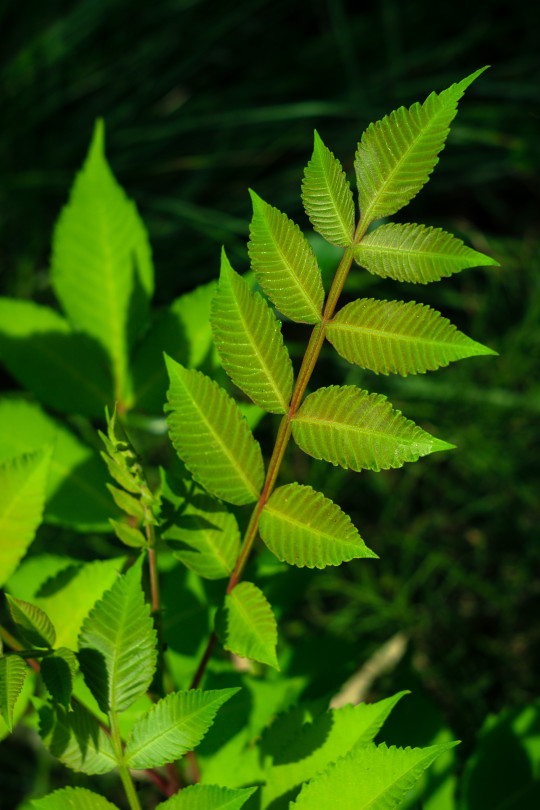
Chinese Sumac by Takayuki Miki on Flickr.
This work is licensed under CC BY-NC-ND 2.0.
#Rhus chinensis#chinese sumac#nutgall tree#green#portrait#wild#foliage#creative commons#creativecommonsplants#botany#curators on tumblr#plants#plant blog#plant photography#id is tentative
5 notes
·
View notes
Video
Lake Sumac
#botw#breath of the wild#loz#legend of zelda#loz botw#legend of zelda breath of the wild#loz: botw#legend of zelda: breath of the wild#lake sumac#hateno village#hateno region#hateno#wind#water#sunset#video
26 notes
·
View notes
Text
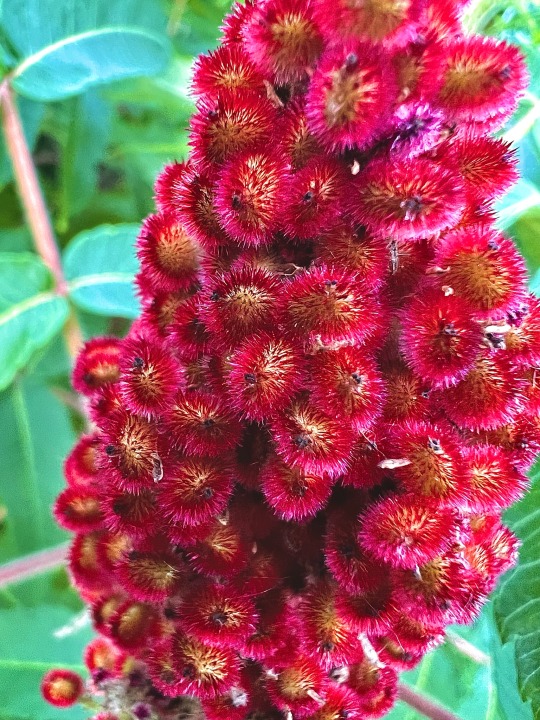
Staghorn Sumac
#my photos#photography#adventure#exploring#minnesota#kcdrummergirl#hiking#outdoors#wild flowers#woods#green#red#yellow#sumac#staghorn sumac
10 notes
·
View notes
Text


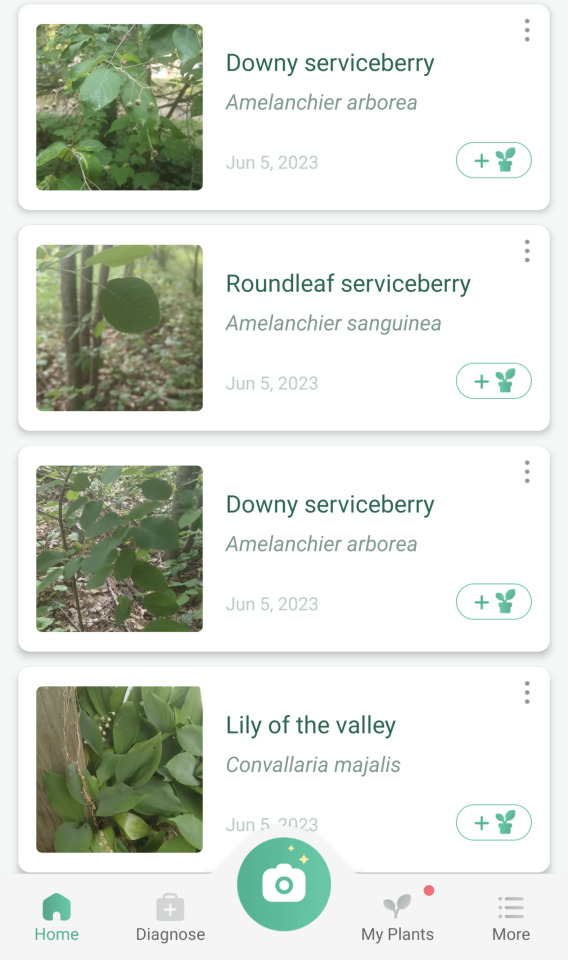
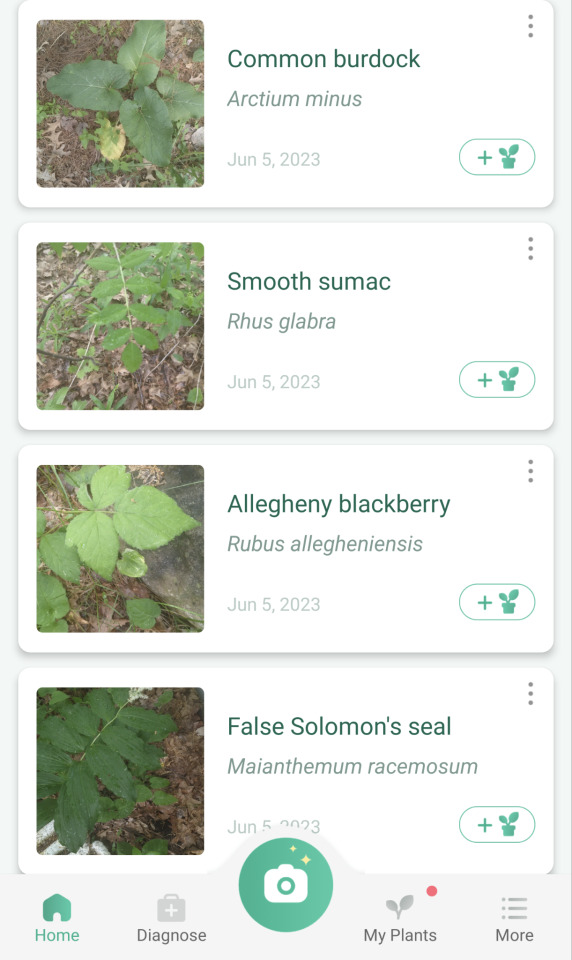
using a plant identification app on random stuff in my yard. I think the birds brought a lot of wild fruit plants to the area because I don't remember seeing blueberries or strawberries
#pretty cool i wanna see how it turns out#also so many different types of sumac#there are a LOTTTT of wild strawberries growing#NO idea how#glad they're real wild strawberries too and not the mock ones
3 notes
·
View notes
Text
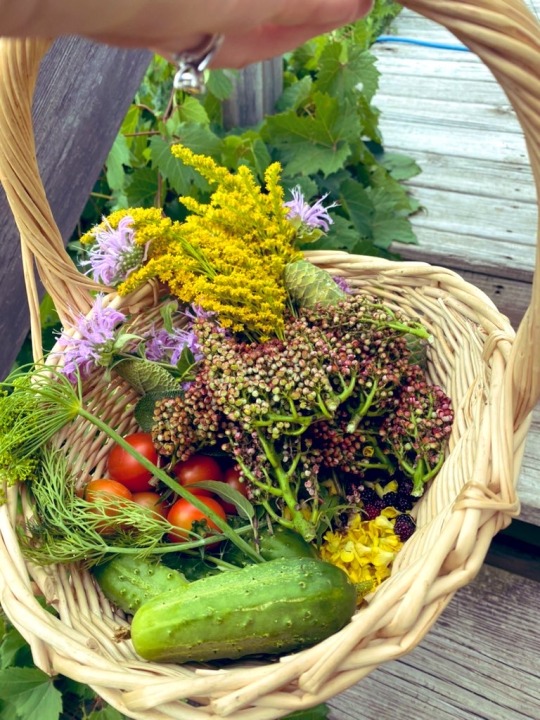
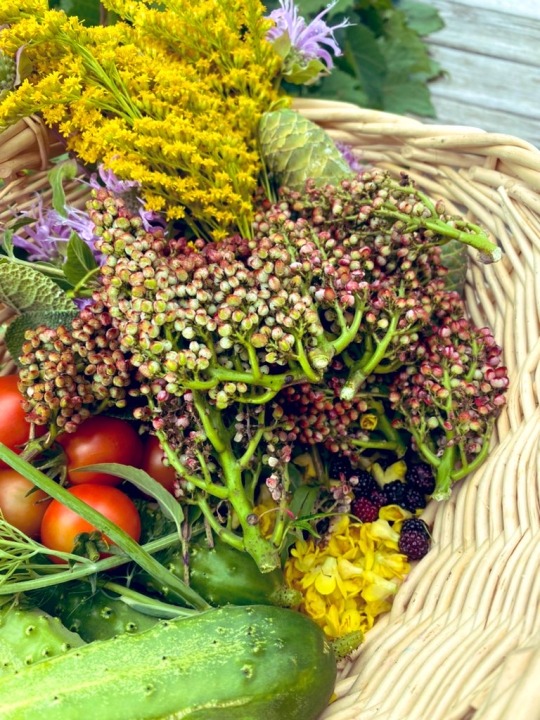
Blessings:
Goldenrod
Tomatoes
Wild Bergamot
Mullein Flowers
Dill
Cucumbers
Sumac Berries
Black Raspberries
Goldenrod
Green Pine Cones
#baskets#basket#homesteading#gardening#foraging#gardener#minnesota#herbal medicine#herbal remedies#herbs#cucumber#dill#tomato#pine#sumac#wild bergamot#bee balm#goldenrod
6 notes
·
View notes
Text
The basil flowers I dried last summer lend themselves nicely to my tea blend but I feel like it needs rounding out with a sweeter flower…. Rose petal? honeysuckle if I could get it. or maybe some kind of dried berry action… blueberries or raspberries or even strawberry maybe
#always a touch afraid to serve new blends to people tbh#sumac makes it taste like marinara and I’m afraid barberry would be the same#I *could* gather and dry wild strawberries but my god the effort involved would be insane. already thinking of growing chamomile next year#*this year. and that seems like enough of a task. there’s violets to gather too hopefully I can find some odorata rather than just#swamp violets and pansies#I want to do more with prunella flower too#oooo maybe red clover blossom would work#herbchat
0 notes
Text
college is great because i get to do things like THIS

I do a podcast for my radio class at school! i literally do not know how to link to it right now, nor do i know if anybody would listen - its called "Sci-Fi Symphonies" and I literally spend 10ish minutes talking about three songs from any science fiction media. TV shows, movies, video games - I dont care as long as its sci-fi.
The name i use in my school projects is Rosewell - my boyfriend came up with it a while back, and now it's my permanent moniker. I figured it was high time i actually made the idea of Rosewell look like something, and I thought this was cute.
(for anyone wondering - the flowers aren't just a personal quirk. I have a weekly segment on my college's radio station called Rosewell and Thorns, where I talk about, and I quote, "how to not get wrecked by random plants.")
#this weeks segment was ✨belladonna✨#very important to not get wrecked by belladonna#it is a potentially deadly psychoactive#other plants include:#chrysanthemums#wild parsnips#poison sumac#daffodils#oleander#and next week will be foxglove
0 notes
Text
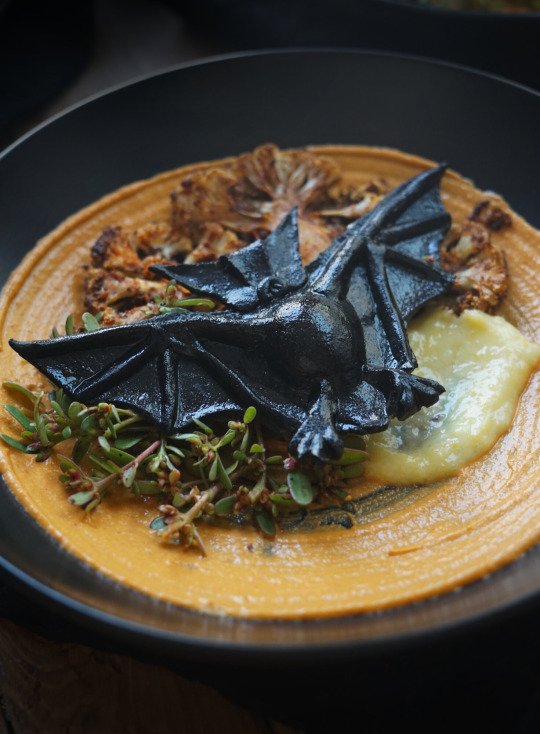
Sunset Roasted Cauliflower, Purslane, Tahini Sriracha, and Preserved Lemon Spread with Gluten-Free Pasta Bats (Vegan)
#vegan#dinner#halloween#pasta#roasted vegetables#cauliflower#purslane#wild foods#wild weeds#tahini#sriracha#lemon#psyllium husk#buckwheat flour#tapioca starch#activated charcoal#olives#olive oil#harissa#sumac#cumin#garlic#agave syrup#applesauce#!#🖤
65 notes
·
View notes
Text

[ID: A decorative orange ceramic plate with a pyramid of green herbs and sesame seeds, topped with deep red sumac and more sesame seeds. End ID]
زعتر فلسطيني / Za'tar falastinia (Palestinian spice blend)
Za'tar (زَعْتَر; also transliterated "za'atar," "zaatar" and "zatar") is the name of a family of culinary herbs; it is also the name of a group of spice blends made by mixing these herbs with varying amounts of olive oil, sumac, salt, roasted sesame seeds, and other spices. Palestinian versions of za'tar often include caraway, aniseed, and roasted wheat alongside generous portions of sumac and sesame seeds. The resulting blend is bold, zesty, and aromatic, with a hint of floral sourness from the sumac, and notes of licorice and anise.
Za'tar is considered by Palestinians to have particular national, political, and personal importance, and exists as a symbol of both Israeli oppression and Palestinian home-making and resistance. Its major components, olive oil and wild thyme, are targeted by the settler state in large part due to their importance to ecology, identity, and trade in Palestine—settlers burn and raze Palestinian farmers' olive trees by the thousands each year. A 1977 Israeli law forbade the harvesting of wild herbs within its claimed borders, with violators of the law risking fines and confiscation, injury, and even death from shootings or land mines; in 2006, za'tar was further restricted, such that even its possession in the West Bank was met with confiscation and fines.
Despite the blanket ban on harvesting wild herbs (none of which are endangered), Arabs are the only ones to be charged and fined for the crime. Samir Naamnih calls the ban an attempt to "starve us out," given that foraging is a major source of food for many Palestinians, and that picking and selling herbs is often the sole form of income for impoverished families. Meanwhile, Israeli farmers have domesticated and farmed za'tar on expropriated Palestinian land, selling it (both the herb and the spice mixture) back to Palestinians, and later marketing it abroad as an "Israeli" blend; they thus profit from the ban on wild harvesting of the herb. This farming model, as well as the double standard regarding harvesting, refer back to an idea that Arabs are a primitive people unfit to own the land, because they did not cultivate or develop it as the settlers did (i.e., did not attempt to recreate a European landscape or European models of agriculture); colonizing and settling the land are cast as justified, and even righteous.
The importance of the ban on foraging goes beyond the economic. Raya Ziada, founder of an acroecology nonprofit based in Ramallah, noted in 2019 that "taking away access to [wild herbs] doesn't just debilitate our economy and compromise what we eat. It's symbolic." Za'tar serves variously as a symbol of Palestinians' connection to the land and to nature; of Israeli colonial dispossession and theft; of the Palestinian home ("It’s a sign of a Palestinian home that has za’tar in it"); and of resistance to the colonial regime, as many Palestinians have continued to forage herbs such as za'tar and akkoub in the decades since the 1977 ban. Resistance to oppression will continue as long as there is oppression.
Palestine Action has called for bail fund donations to aid in their storming, occupying, shutting down, and dismantling of factories and offices owned by Israeli arms manufacturer Elbit Systems. Also contact your representatives in the USA, UK, and Canada.
Ingredients:
Za'tar (Origanum syriacum), 250g once dried (about 4 cups packed)
250g (1 2/3 cup) sesame seeds
170g (3/4 cup) Levantine sumac berries, or ground sumac (Rhus coriaria)
100g (1/2 cup) wheat berries (optional)
2 Tbsp olive oil
1 Tbsp aniseed (optional)
1/2 Tbsp caraway seeds (optional)
Levantine wild thyme (also known as Bible hyssop, Syrian oregano, and Lebanese oregano) may be purchased dried online. You may also be able to find some dried at a halal grocery store, where it will be labelled "زعتر" (za'tar) and "thym," "thyme," or "oregano." Check to make sure that what you're buying is just the herb and not the prepared mixture, which is also called "زعتر." Also ensure that what you're buying is not a product of Israel.
If you don't have access to Levantine thyme, Greek or Turkish oregano are good substitutes.
Wheat berries are the wheat kernel that is ground to produce flour. They may be available sold as "wheat berries" at a speciality health foods store. They may be omitted, or replaced with pre-ground whole wheat flour.
Instructions:
1. Harvest wild thyme and remove the stems from the leaves. Wash the leaves in a large bowl of water and pat dry; leave in a single layer in the sun for four days or so, until brittle. Skip this step if using pre-dried herbs.
2. Crumble leaves by rubbing them between the palms of your hands until they are very fine. Pass through a sieve or flour sifter into a large bowl, re-crumbling any leaves that are too coarse to get through.
Crumbling between the hands is an older method. You may also use a blender or food processor to grind the leaves.
3. Mix the sifted thyme with a drizzle of olive oil and work it between your hands until incorporated.
4. Briefly toast sumac berries, caraway seeds, and aniseed in a dry skillet over medium heat, then grind them to a fine powder in a mortar and pestle or a spice mill.
5. Toast sesame seeds in a dry skillet over medium heat, stirring constantly, until deeply golden brown.
6. (Optional) In a dry skillet on medium-low, toast wheat berries, stirring constantly, until they are deeply golden brown. Grind to a fine powder in a spice mill. If using ground flour, toast on low, stirring constantly, until browned.

Some people in the Levant bring their wheat to a local mill to be ground after toasting, as it produces a finer and more consistent texture.
7. Mix all ingredients together and work between your hands to incorporate.
Store za'tar in an airtight jar at room temperature. Mix with olive oil and use as a dipping sauce with bread.
2K notes
·
View notes
Photo
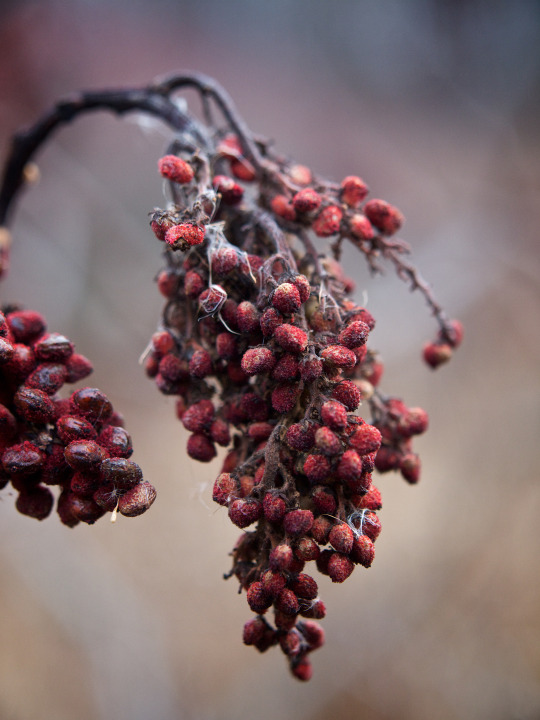
Winged Sumac by David Marvin on Flickr.
This photo is licensed under CC BY-NC-ND 2.0.
#winged sumac#shining sumac#rhus copallinum#fruit#wild#portrait#wildflowers#red#creative commons#creativecommonsplants#curators on tumblr#botany#plants#plant blog#plant photography#flickr
2 notes
·
View notes
Text
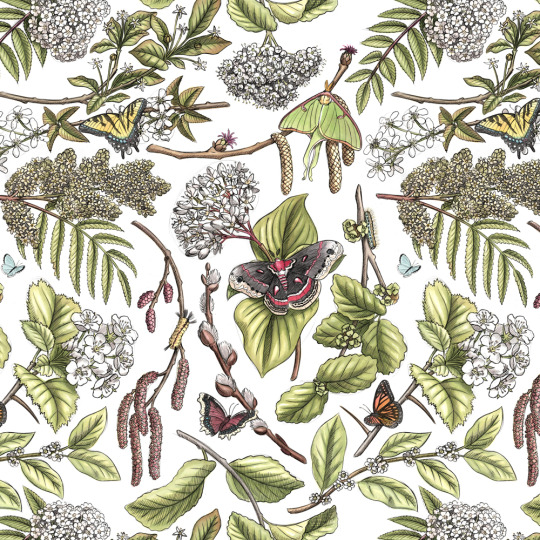
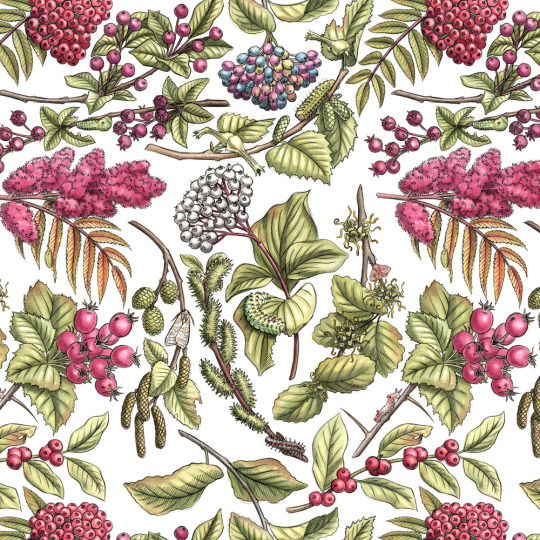
New England native shrub patterns, in spring and autumn. Featuring some lepidoptera species hosted by the plants, in their larval and adult forms. For a project that's been 4 years in the works… More details soon.
Mountain Holly
Northern Wild Raisin
American Mountain Ash
Shadbush with Eastern Tiger Swallowtail Butterfly
Beaked Hazelnut with Luna Moth
Staghorn Sumac with Spring Azure Butterfly
Red-osier Dogwood with Cecropia Moth
American Witch Hazel with Eastern Tent Moth
Pussy Willow with Mourning Cloak Butterfly
Gray Alder with Banded Tussock Moth
Big-fruit Hawthorn with Viceroy Butterfly
Winterberry Holly
#sketch#watercolor#illustration#art#design#pattern#plants#shrubs#native plants#nature#naturalist#nature journal#jada fitch#maine#new england#wildflowers#berries#lepidoptera#drawing#pencil#moths#butterflies#butterfly#moth#caterpillar#larvae#artist#maine illustrator#nature art#field sketch
271 notes
·
View notes
Text
April 9, 2024: Physical Therapy, Franny Choi
Physical Therapy
Franny Choi
Ask, first, what your smallest
body parts require to sing again:
coconut oil for your hair’s
dry ends, camphor for the
earlobes, rosehip kneaded into
fingertips with fingertips.
Grapeseed will feed most
hungers of the skin. But
if even your bones cry
January, dip your sharpest
knife in a jar of raw honey.
Lather it on your thighs,
making circles, making certain
not to confuse this ache for that
other, the one that keeps
pulling you to the earth, the one
question you still can’t say out loud.
Recite instead the names of trees:
sumac, sweet birch, slippery elm.
Take your palm to the wild place
under your chin and count:
vein, artery, chokecherry,
weeping willow, until your
xacto knife pulse slows, holds. Let
your mouth fill with gold, almonds,
zinneas. Then: soften.
--
In an abecedarian poem, each line begins with successive letters of the alphabet.
Also:
+ VI. Wisdom: The Voice of God, Mary Karr
+ Frida Kahlo to Marty McConnell, Marty McConnell
+ Heartbeats, Melvin Dixon
More by Franny Choi:
+ Catastrophe Is Next to Godliness
+ The World Keeps Ending, and the World Goes On
Today in:
2023: Come Quickly, Izumi Shikibu
2022: Heretic That I Am, Tomás Q. Morín
2021: The World Has Need of You, Ellen Bass
2020: Annus Mirabilis, R. A. Villanueva
2019: This Page Ripped Out and Rolled into a Ball, Brendan Constantine
2018: Winter Stars, Larry Levis
2017: In That Other Fantasy Where We Live Forever, Wanda Coleman
2016: The cat’s song, Marge Piercy
2015: The Embrace, Mark Doty
2014: No. 6, Charles Bukowski
2013: A Schoolroom in Haiti, Kenneth Koch
2012: Track 5: Summertime, Jericho Brown
2011: Death, Is All, Ana Božičević
2010: Heaven, William Heyen
2009: April in Maine, May Sarton
2008: Making Love to Myself, James L. White
2007: Publication Date, Franz Wright
2006: Living in the Body, Joyce Sutphen
2005: Aberration (The Hubble Space Telescope before repair), Rebecca Elson
59 notes
·
View notes
Text
🌿Inviting Birds Into Your Garden🐦
Birds are essential to a healthy ecosystem, but not everyone takes kindly to them in their gardens. Birds love to eat berries, peck holes in fruits, and scratch up seedlings, but in the permaculture garden we strive to partner with nature to meet the needs of wildlife AND ourselves. Growing food for ourselves at the expense of wildlife has resulted, in part, in the current global food system that doesn't value the humans involved or the ecosystem.
"By attracting birds, small animals, and insects to our yards, we not only increase biodiversity but make our gardens more balanced, disease free, and productive as well." -Toby Hemenway, Gaia's Garden: A Guide to Small-Scale Permaculture
Benefits of a Bird-Friendly Garden
Birds are beautiful! Watching them enjoy your gardens and learning bird language is rewarding and entertaining
Birds keep insect problems in check
Birds loosen the soil as they forage and scratch
Birds provide natural fertilizer
The Combination that Works
"Creating a garden that your winged friends want to call home is easy. You'll need to provide food, water, and shelter. Any of these elements will bring birds to your garden for a visit. But providing all three will make them more inclined to take up residence." -Kris Bordessa, Attainable Sustainable: The Lost Art of Self-Reliant Living
Keep in mind that birds have different needs! Not all birds eat the same things and their nesting habits vary. So the real key is diversity! Plant a variety of plant types, textures, heights, and seasons of value.
Food
Birds have a varied diet of fruit/berries, insects, and nuts/seeds. Some have more specific diets than others. Some forage for food on the ground and some hunt above ground.
Year-Round Bird Food Sources
Evergreen trees - Provide shelter, protection, and sap for food
Flowers, tall grasses, and herbs - Provide cover for ground feeders, seeds, nectar, and insects to forage
Fruits (late spring through summer) - Blueberries, brambles like blackberries or raspberries, cherries, elderberries, mulberries, serviceberries, and wild plum. Birds LOVE mulberries especially and having them available will help deter birds from your other crops
Fruits (fall) - Aronia berries, dogwood, sea buckthorn, buffaloberry. In fall birds need to build up fat reserves to survive winter, give them a fall buffet!
Fruits (winter) - These are fruits that cling to branches over winter. Crabapple, hardy kiwi, hawthorn, highbush cranberry, medlar, sumac
Nectar-producing plants for hummingbirds - Bee balm, lupine, sage, maple trees, black locust trees
Nuts - Butternut, chestnut, hazelnut, pickory, piñon, walnut. Offer protection, good nesting sites, and insects to forage
Choose plants native to your area!
2. Water
Birds love natural moving water like streams or ponds. Replicate this with a 2 inch deep bird bath with a fountain! Place your bird bath near a shrub so they have perches and an escape route nearby.
3. Shelter & Protection
Birds need shelter from the elements and protection from predators along with their food and water sources.
Tall grass, dense shrubs, tree canopy, and thorny plants act as a save haven. Birds also nest at different heights, so offer a variety of trees and shrubs for them to settle in.
More plant ideas that provide nesting sites, shelter, and protection:
Apple
Persimmon
Rose
Serviceberry
"Without animals, nature just limps along." -Toby Hemenway
Source
#permaculture#permaculture gardening#food forest#birds#gardening#birds in the garden#cottagecore#solarpunk#ecosystem
469 notes
·
View notes
